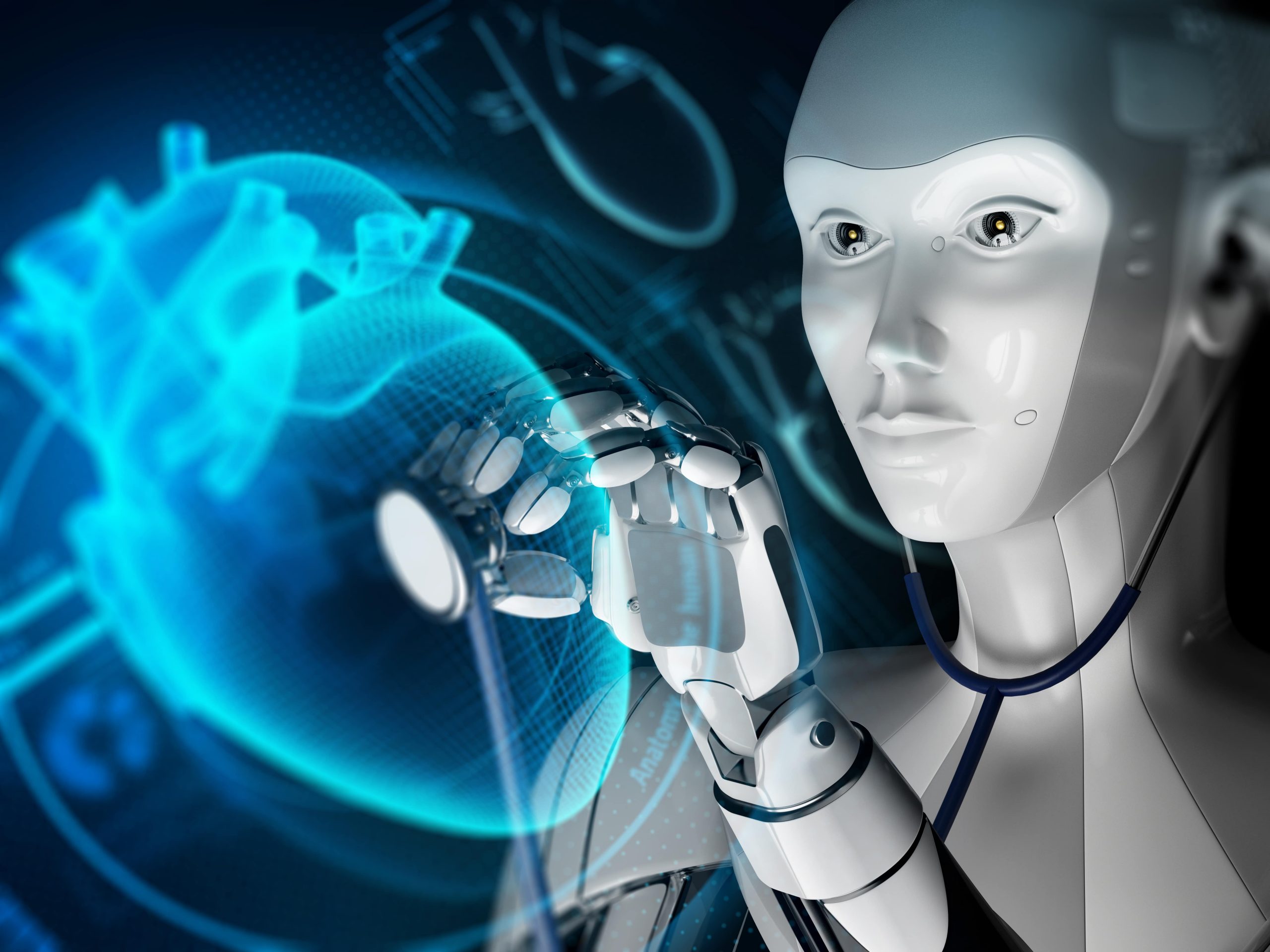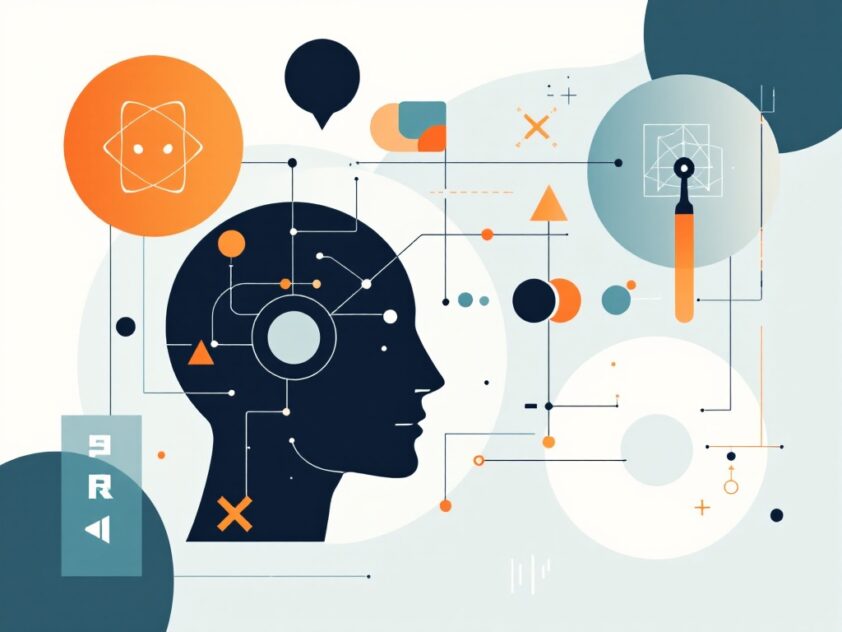Remember the early days of artificial intelligence when computers learned through carefully crafted rules instead of massive datasets? That approach, known as Good Old-Fashioned Artificial Intelligence (GOFAI), revolutionized how machines could think and reason. Today, as we experience an AI renaissance, these symbolic AI tools remain relevant for solving complex problems through logic and structured reasoning.
Imagine a system that works like a meticulous librarian, organizing knowledge into clear, logical categories and applying precise rules to solve problems. That’s exactly what symbolic AI does—it manipulates high-level symbols and concepts much like humans do when reasoning through complex challenges. Unlike today’s data-hungry machine learning models, symbolic AI relies on explicit rules and logical structures to make decisions.
The journey of symbolic AI dates back to the 1950s when pioneers like John Haugeland coined the term GOFAI, marking the beginning of an era where computers could process information using human-readable symbols and logic. This approach dominated AI research for decades, giving birth to expert systems and logical reasoning frameworks that continue to influence modern AI applications.
Throughout this article, we’ll explore the foundational tools that make symbolic AI tick—from knowledge representation systems and inference engines to expert systems and semantic networks. You’ll discover how these tools tackle real-world challenges in fields like medical diagnosis, legal reasoning, and automated problem-solving.
Whether you’re a developer seeking to implement rule-based systems or a technical leader evaluating AI solutions, understanding symbolic AI’s capabilities and limitations will help you make informed decisions about when and how to leverage this powerful approach. Let’s dive into the world of symbolic reasoning and uncover how these time-tested tools can complement modern AI techniques.
Key Tools and Techniques in Symbolic AI
Symbolic artificial intelligence relies on sophisticated tools for representing and manipulating knowledge. These tools enable machines to process information in ways that mirror human-like reasoning and problem-solving capabilities.
Logic programming serves as the foundation for symbolic AI systems, enabling precise formal reasoning through languages like Prolog. This approach treats computation as a process of logical deduction, where programs consist of facts and rules that the system uses to derive conclusions. For example, a medical diagnosis system might use logic programming to deduce potential conditions based on observed symptoms.
Production rules represent another cornerstone of symbolic AI, operating on an IF-THEN principle to capture expert knowledge. These rules form the backbone of expert systems, allowing them to emulate human decision-making processes. For instance, a financial advisory system might use production rules like ‘IF annual income exceeds $100,000 AND debt ratio is below 30% THEN recommend aggressive investment strategy.’
Semantic networks provide a visual and intuitive way to represent relationships between concepts through a network of nodes and links. This representation mirrors how humans naturally organize knowledge, making it particularly effective for modeling complex relationships. In a semantic network, concepts like ‘car’ might be connected to related concepts like ‘wheel’, ‘engine’, and ‘vehicle’ through labeled relationships.
Semantic nets and frames work together to create rich knowledge representations that capture both structural and behavioral aspects of concepts. Frames organize information into structured units, similar to how object-oriented programming organizes code, allowing systems to represent both the attributes of objects and the procedures for using them.
Ontologies extend these representational tools by providing formal vocabularies that define concepts and relationships within specific domains. For example, medical ontologies create standardized ways to describe diseases, symptoms, and treatments, enabling different AI systems to share and process medical knowledge consistently.
The integration of these tools has led to powerful knowledge-based systems capable of sophisticated reasoning and problem-solving. Modern expert systems combine multiple representation techniques to achieve more robust and flexible intelligence, demonstrating how these fundamental tools continue to evolve and adapt to new challenges in artificial intelligence.
Each of these tools contributes uniquely to the field’s ability to model and manipulate knowledge, making symbolic AI an enduring and vital approach to artificial intelligence. As we continue to advance our understanding of human cognition and machine intelligence, these foundational tools remain essential for developing systems that can reason, learn, and solve complex problems.
Challenges and Limitations of Symbolic AI
Symbolic AI, while groundbreaking in its approach to replicating human reasoning, faces significant hurdles that limit its real-world applications. The fundamental challenge lies in its difficulty handling ambiguous and uncertain information—a stark contrast to human intelligence, which naturally manages uncertainty in everyday decision-making.
The first major limitation emerges in knowledge representation. Traditional symbolic systems require precise, unambiguous rules, making it challenging to capture the nuanced, context-dependent nature of real-world knowledge. For instance, while a symbolic AI system might excel at chess by following clear-cut rules, it would struggle to interpret a simple statement like “the weather looks nice”—a task that humans manage effortlessly despite its inherent ambiguity.
Scaling presents another formidable obstacle. As research has shown, symbolic AI systems face a “combinatorial explosion” when dealing with complex scenarios. The number of rules and relationships that need to be explicitly defined grows exponentially with the complexity of the problem, making it computationally infeasible for many real-world applications.
Perhaps most critically, symbolic AI struggles with adaptability and learning from experience. Unlike humans who can naturally learn from examples and adjust their understanding, symbolic systems require manual updates to their knowledge bases and rule sets. This rigidity makes them brittle in dynamic environments where rules and relationships constantly evolve.
The integration with modern data-driven approaches emerges as a potential solution to these limitations. Neuro-symbolic AI, which combines the logical reasoning of symbolic systems with the learning capabilities of neural networks, offers a promising path forward. This hybrid approach enables systems to maintain the interpretability of symbolic reasoning while leveraging the pattern-recognition strengths of deep learning.
By confronting these challenges through innovative hybrid approaches, researchers are working to bridge the gap between symbolic AI’s logical precision and the fluid, adaptable nature of human intelligence. The future of AI likely lies not in choosing between symbolic and neural approaches, but in finding elegant ways to combine their respective strengths.
Real-World Applications of Symbolic AI

Symbolic AI continues to power critical applications that require explicit reasoning and human-like decision making. From healthcare diagnostics to virtual assistants, this traditional approach to artificial intelligence demonstrates remarkable utility in scenarios where clear logic and explainable outcomes are paramount.
Medical Diagnosis Systems
One of the most impactful applications of symbolic AI lies in medical diagnosis. These systems use rule-based reasoning to connect symptoms with potential conditions, much like human doctors follow diagnostic protocols. For instance, a symbolic AI system might apply logic such as: IF patient has fever AND cough AND difficulty breathing THEN consider pneumonia as a potential diagnosis
.
The power of symbolic AI in medical diagnosis comes from its ability to process complex decision trees while maintaining transparency in its reasoning process. Unlike black-box AI solutions, doctors can trace exactly how the system arrived at its conclusions, making it an invaluable tool for supporting clinical decisions.
Medical diagnosis systems powered by symbolic AI have shown remarkable accuracy in their recommendations. Studies have demonstrated that these systems can match or exceed the performance of human experts in diagnostic accuracy while maintaining clear explanations for their suggestions.
Digital Assistants and Natural Language Processing
Virtual assistants like Siri incorporate symbolic AI to process and understand human commands through structured rules and logical inference. This approach enables them to interpret user intentions and provide appropriate responses based on predefined knowledge representations.
In natural language processing tasks, symbolic AI excels at parsing grammatical structures and maintaining context through explicit rule sets. This makes it particularly effective for applications requiring precise language understanding, such as automated customer service systems or language translation tools.
The strength of symbolic AI in these applications lies in its ability to handle complex linguistic rules and maintain consistent responses. Unlike purely statistical approaches, symbolic AI can apply grammatical rules and logical constraints to ensure more accurate and contextually appropriate interactions.
Expert Systems in Professional Fields
Professional domains that rely heavily on structured knowledge and explicit reasoning have particularly benefited from symbolic AI implementations. These expert systems encode domain expertise into rule-based frameworks, enabling them to provide sophisticated guidance and recommendations.
For example, in legal applications, symbolic AI helps analyze case law and legal documents by applying logical rules to identify relevant precedents and potential implications. Similarly, in financial services, these systems assist in risk assessment and compliance monitoring through clearly defined decision criteria.
Symbolic AI’s greatest strength lies in its ability to make complex decisions through clear, explainable reasoning processes – a crucial requirement in professional fields where transparency and accountability are essential.
Future Directions in Symbolic AI
The landscape of artificial intelligence stands at a pivotal crossroads, with neuro-symbolic AI emerging as a groundbreaking fusion between traditional symbolic reasoning and modern neural networks. This innovative integration promises to overcome the limitations that have historically constrained AI systems.
Neuro-symbolic AI represents more than just a technical merger—it’s a fundamental shift in how machines process information. Traditional symbolic AI excels at explicit reasoning but struggles with real-world complexity, while neural networks handle pattern recognition but lack interpretability. By combining these approaches, researchers are developing systems that can both learn from data and reason with explicit symbols, marking a significant advancement toward more human-like artificial intelligence.
Context-aware AI systems stand out as one of the most promising developments in this field. These systems can adapt their behavior based on situational understanding, much like humans adjust their responses to different social contexts. For instance, a context-aware AI assistant could modify its communication style depending on whether it’s helping a technical expert or a novice user.
Safe machine learning applications represent another crucial frontier. By incorporating symbolic rules and constraints into neural learning processes, developers can create AI systems with built-in safeguards. This approach helps ensure that AI systems operate within predefined ethical and safety boundaries while maintaining their ability to learn and adapt.
The integration of symbolic reasoning with neural networks also opens new possibilities for explainable AI. While traditional deep learning models often function as black boxes, neuro-symbolic systems can provide clear reasoning paths for their decisions, making them particularly valuable in critical applications like healthcare and autonomous systems.
Looking ahead, one of the most exciting prospects is the development of meta-cognitive abilities in AI systems. These advanced architectures will not only process information but also reflect on their own reasoning processes, allowing them to identify and correct potential errors in their logic—a capability that moves us closer to truly intelligent systems.
Why SmythOS is Ideal for Symbolic AI Development
Building sophisticated symbolic AI systems demands a robust development environment that can handle complex reasoning patterns and rule-based logic. SmythOS delivers this through its comprehensive visual debugging capabilities, enabling developers to track logic flows, identify bottlenecks, and optimize symbolic operations with unprecedented clarity.
At the heart of SmythOS lies a powerful integration framework that seamlessly connects with existing rule systems. This means organizations can preserve their investments in established symbolic AI infrastructure while incrementally enhancing their capabilities. The platform’s intuitive interface makes it straightforward to map and modify rule relationships, ensuring logical consistency across the system.
What truly sets SmythOS apart is its innovative approach to hybrid AI development. By combining symbolic reasoning with neural capabilities, developers can create more nuanced and adaptable AI solutions. This hybrid approach allows systems to leverage both rule-based precision and the pattern-recognition strengths of neural networks, resulting in more sophisticated and context-aware applications.
The platform’s visual workflow builder transforms complex symbolic logic into clear, manageable components. Developers can quickly prototype and iterate on their reasoning systems, visualizing the relationships between different rule sets and how they interact. This visual approach not only accelerates development but also makes it easier to maintain and update symbolic AI systems over time.
Furthermore, SmythOS’s runtime environment is optimized for efficient execution of symbolic operations. The platform handles resource allocation and scaling automatically, ensuring that even complex reasoning chains perform smoothly under real-world conditions. This optimization extends to both development and deployment phases, streamlining the entire lifecycle of symbolic AI projects.
By ensuring students truly understand the future of AI Orchestration and are equipped to walk into companies across the globe with a fundamental understanding of how to build multi-agent systems, we believe we can empower future generations to harness the power of artificial intelligence rather than fear it.
Michael Walker, SmythOS CMO
The platform’s commitment to enterprise-grade deployment options means that symbolic AI solutions built with SmythOS can be seamlessly integrated into existing business workflows. Whether it’s on-premises installation or cloud deployment, organizations can choose the approach that best fits their security and operational requirements.
The Role of Symbolic AI in Hybrid Systems

Insights into India’s analytics landscape. – Via analyticsindiamag.com
Symbolic AI brings powerful reasoning capabilities to modern hybrid artificial intelligence systems by combining traditional logic-based approaches with neural networks. This integration enables AI systems to leverage the complementary strengths of both paradigms – the explicit reasoning and knowledge representation of symbolic AI alongside the pattern recognition and learning abilities of neural networks. At its core, symbolic AI contributes formal logic, knowledge graphs, and rule-based reasoning to hybrid systems.
For example, Google’s search engine demonstrates this hybrid approach by combining neural networks for processing text with symbolic knowledge graphs for logical reasoning about relationships between concepts. This allows the system to both understand natural language queries and make logical inferences about the information it contains. Th
Neural-symbolic integration enhances problem-solving capabilities across various domains. In computer vision applications, neural networks are adept at processing raw image data, while symbolic components contribute high-level reasoning about objects and their relationships. This combination allows hybrid systems not only to recognize objects but also to reason about their properties and interactions in a way that is interpretable to humans.
A key advantage of these hybrid systems is their ability to effectively handle both structured and unstructured data. Neural networks manage complex sensory inputs, such as images, text, and speech, whereas symbolic AI components can represent and manipulate abstract concepts and rules. For example, in autonomous driving systems, neural networks perform perception tasks, like identifying road signs and obstacles, while symbolic reasoning is responsible for high-level planning and decision-making based on traffic rules and safety constraints.
The synergy between symbolic and neural approaches also improves the explainability of AI systems. The symbolic components provide clear logical steps and rules that are understandable to humans, while the neural networks tackle complex pattern recognition tasks. This transparency is critical in fields such as healthcare, where doctors need to comprehend the reasoning behind AI-generated diagnoses and recommendations.
Conclusion and Future Perspectives
The fusion of symbolic AI with neural networks heralds an exciting new chapter in artificial intelligence. By combining the logical reasoning of symbolic systems with the pattern recognition capabilities of neural networks, we are witnessing the emergence of more sophisticated and capable AI solutions. These hybrid approaches offer the best of both worlds – the interpretability and structured knowledge representation of symbolic AI alongside the adaptive learning capabilities of neural networks.
This integration is particularly compelling due to its potential to address long-standing challenges in AI development. Neural-symbolic systems can perform complex reasoning tasks with unprecedented efficiency while maintaining the transparency that purely neural approaches often lack. This breakthrough enables AI systems to handle both structured and unstructured data effectively, opening doors to applications previously considered out of reach.
SmythOS exemplifies this evolutionary step forward with its innovative hybrid architecture. The platform’s ability to seamlessly blend symbolic reasoning with neural capabilities positions it at the forefront of this technological advancement. Through its intuitive visual development interface and robust debugging tools, SmythOS demonstrates how hybrid AI systems can be both powerful and accessible.
Looking ahead, the focus will likely shift toward enhancing the practical applications of these integrated systems. Research has shown that neural-symbolic integration offers promising solutions for automating complex cognitive tasks while maintaining interpretability. As these technologies mature, we can expect to see more emphasis on improving coherence between symbolic and neural components, making systems more reliable and applicable across diverse real-world scenarios.
The future of AI lies not in choosing between symbolic reasoning and neural networks, but in finding innovative ways to combine their strengths. As we continue to refine these hybrid approaches, we are moving closer to AI systems that can truly reason, learn, and adapt in ways that more closely mirror human cognitive capabilities.
